Experience the joy of clear, natural hearing with the Jabra Hearing Aids. This advanced technology delivers superior sound quality, while this sleek design ensures a comfortable, confident fit. Enjoy hands-free calls and streaming with Bluetooth connectivity. Jabra hearing aids rediscover the world of sound.
Introduction to Jabra Hearing Aid
Jabra, known for its high-quality earbuds and headsets, has ventured into the hearing aid market with its Jabra Enhance series. While a newcomer compared to established hearing aid brands, Jabra brings its expertise in audio technology and offers a unique approach to hearing solutions.

About Jabra:
- Danish company founded in 1888, a world leader in audio solutions for businesses and consumers.
- Renowned for innovative and user-friendly audio devices, with a focus on design and functionality.
- Jabra Enhance is their latest venture, aiming to make hearing aids more accessible and affordable.
Jabra Hearing Aid Products:
Jabra currently offers two distinct hearing aid categories:
1. Jabra Enhance Select:
- Prescription-based hearing aids: require an audiologist’s assessment and fitting.
- Offer advanced features: Bluetooth connectivity, noise reduction, directional hearing, and smartphone app control.
- Available in different models: Select 10, Select 40, and Select 50R, catering to various hearing loss levels and preferences.
- Priced competitively: starting at $799 per pair.
- Additional support: The optional premium package includes ongoing support from Jabra’s audiology team.
2. Jabra Enhance Plus:
- Over-the-counter (OTC) hearing aids: self-fitting, no audiologist required (limited to mild-to-moderate hearing loss).
- Simpler features: focus on amplifying sound and basic noise reduction.
- More affordable: priced at $799 per pair.
- App-based personalization: adjust sound settings based on your preferences.
Key Selling Points of Jabra Hearing Aids:
- Discreet and comfortable design: small and lightweight for all-day wear.
- User-friendly app control: adjust settings easily from your smartphone.
- Focus on speech clarity: enhance conversations even in noisy environments.
- Variety of options: cater to different needs and budgets.
Things to Consider:
- Jabra Enhance Select requires professional fitting, while Enhance Plus is self-fitting but limited in features.
- Consult a doctor or audiologist to determine the best solution for your needs.
- Research and compare different hearing aid brands before making a decision.
Understanding Hearing Loss
Hearing loss is a common condition affecting people of all ages. It can range from mild difficulty hearing faint sounds to complete deafness. Understanding its causes, types, and the importance of addressing it can empower you to seek solutions and improve your quality of life.
What is Hearing Loss?
Hearing loss refers to a reduced ability to detect or understand sound. This can manifest in various ways, such as difficulty hearing high-pitched sounds, muffled speech, or needing to turn up the volume excessively.
Common Causes of Hearing Loss:
- Age-related hearing loss (presbycusis): This is the most common cause, affecting nearly one-third of people over 65.
- Noise exposure: Prolonged exposure to loud noises, like music or occupational hazards, can damage the inner ear.
- Ear infections and blockages: Earwax buildup, recurrent infections, or eardrum perforations can temporarily or permanently affect hearing.
- Head injuries: Trauma to the head can damage the structures involved in hearing.
- Genetic factors: Some people are predisposed to hearing loss due to their genes.
- Certain medications: Some drugs can have ototoxic effects, damaging the inner ear and causing hearing loss.
Types of Hearing Loss:
- Conductive hearing loss: Blockages or problems in the outer or middle ear prevent sound waves from reaching the inner ear effectively.
- Sensorineural hearing loss: Damage to the inner ear or the auditory nerve disrupts the transmission of sound signals to the brain.
- Mixed hearing loss: This involves a combination of conductive and sensorineural hearing loss.
Importance of Addressing Hearing Loss:
Untreated hearing loss can have significant consequences, including:
- Social isolation and withdrawal: Difficulty communicating can lead to loneliness and withdrawal from social activities.
- Cognitive decline: Studies suggest a link between untreated hearing loss and increased risk of dementia and cognitive decline.
- Mental health issues: The frustration and isolation associated with hearing loss can contribute to anxiety and depression.
- Reduced safety: The inability to hear important sounds like alarms or approaching vehicles can pose safety risks.
Seeking Help:
If you suspect hearing loss, consult a doctor or audiologist for a comprehensive evaluation. Early diagnosis and appropriate intervention can significantly improve your hearing and overall well-being.
Features and Technology of Jabra Hearing Aid
Jabra, known for its audio expertise, brings a fresh perspective to the hearing aid market with its Jabra Enhance series. Let’s explore their technology and compare it to traditional hearing aids:
Technology Overview:
- GN Hearing Partnership: Jabra leverages the technology and experience of GN Hearing, a well-established hearing aid manufacturer.
- Focus on Natural Sound: Jabra’s “Warp Compressor” technology analyzes sound with high resolution, aiming for natural-sounding amplification.
- Advanced Noise Reduction: Their algorithms distinguish speech from background noise, prioritizing clarity in challenging environments.
- Multidirectional Microphones: Enhance Plus uses four microphones to focus on sounds coming from the front, improving speech understanding.
- Bluetooth Connectivity: Both models connect to smartphones for streaming audio and app control.
- Self-Fitting Option: Enhance Plus offers self-fitting through an app, while Select requires professional fitting.
Key Features and Functionalities:
Jabra Enhance Select:
- Prescription-based: Requires audiologist fitting for personalized settings.
- Advanced features: Bluetooth streaming, directional microphones, various noise reduction modes, app control.
- Multiple models: Select 10, 40, and 50R cater to different hearing loss levels and preferences.
Jabra Enhance Plus:
- Over-the-counter (OTC): Self-fitting through an app, suitable for mild-to-moderate hearing loss.
- Simpler features: Basic noise reduction, smartphone app control for sound adjustments.
How Jabra Differs:
- Discreet and comfortable design: Smaller and lighter than traditional hearing aids.
- User-friendly app control: Intuitive app for adjustments and personalization.
- Focus on speech clarity: Algorithms prioritize amplifying speech, even in noisy environments.
- Self-fitting option: Enhance Plus offers an alternative to traditional audiologist fitting.
- Competitive pricing: Aimed at making hearing aids more accessible.
Important to Note:
- While Jabra offers innovative features, traditional hearing aids may still offer a wider range of customization and advanced functionalities.
- Consulting an audiologist remains crucial for proper diagnosis and personalized recommendations.
- Self-fitting options like Enhance Plus have limitations based on hearing loss severity.
Benefits of Using Jabra Hearing Aid
Jabra hearing aids offer a unique blend of technology and design, promising several potential benefits for users:
Improved Sound Quality and Clarity:
- Natural Sound Reproduction: Jabra’s “Warp Compressor” aims to deliver natural-sounding amplification, avoiding the metallic or robotic sound sometimes associated with hearing aids.
- Advanced Noise Reduction: The algorithms can filter out background noise, prioritizing speech and clear communication, even in busy environments.
- Focus on Speech: Jabra technology emphasizes amplifying speech over other sounds, making conversations easier to understand.
Enhanced Listening Experience in Various Environments:
- Multidirectional Microphones: Enhance Plus uses four microphones to pick up sounds from different directions, helping you focus on important conversations, even in crowded settings.
- Adjustable Settings: Both models offer app-based control, allowing for personalized adjustments based on the environment (e.g., restaurant, outdoor, quiet room).
- Bluetooth Connectivity: Stream audio directly from your phone, TV, or other devices for a seamless listening experience.
Comfort and Convenience Features:
- Discreet and Comfortable Design: Jabra hearing aids are smaller and lighter compared to many traditional models, offering improved comfort for all-day wear.
- Self-Fitting Option: Enhance Plus allows self-fitting through an app, providing flexibility and convenience for those with mild-to-moderate hearing loss.
- Easy Charging: Both models use rechargeable batteries, eliminating the need for frequent battery changes.
Integration with Other Devices and Apps:
- Smartphone App Control: Manage settings, adjust sound profiles, and personalize your hearing experience using the intuitive Jabra Enhance app.
- Health Tracking: Some models offer optional health tracking features, monitoring steps, activity levels, and reminding you to charge your hearing aids.
- Future Compatibility: Jabra’s focus on innovation suggests potential for future integrations and software updates to enhance functionality.
Jabra Hearing Aid Product Lineup
Jabra currently offers two distinct hearing aid categories, each with its own set of models catering to different needs and budgets:
1. Jabra Enhance Select:
Prescription-based hearing aids require professional fitting by an audiologist. These models offer advanced features and customization options:
-
Jabra Enhance Select 10:
- Image:
- Target audience: Individuals with mild to moderate hearing loss seeking advanced features and professional fitting.
- Features: Bluetooth connectivity, directional microphones, multiple noise reduction modes, app control, rechargeable battery.
- Price: Starting at $799 per pair.
-
Jabra Enhance Select 40:
- Image:
- Target audience: Individuals with moderate to severe hearing loss seeking advanced features and professional fitting.
- Features: Same as Select 10, plus additional customization options.
- Price: Starting at $999 per pair.
-
Jabra Enhance Select 50R:
- Image:
- Target audience: Individuals with severe to profound hearing loss seeking advanced features and professional fitting.
- Features: Same as Select 40, plus additional high-power amplification.
- Price: Starting at $1,199 per pair.
2. Jabra Enhance Plus:
Over-the-counter (OTC) hearing aids for self-fitting, suitable for mild to moderate hearing loss:
-
Jabra Enhance Plus:
- Image:
- Target audience: Adults with mild to moderate hearing loss seeking a convenient and affordable self-fitting solution.
- Features: Basic noise reduction, Bluetooth connectivity, app control for sound adjustments, rechargeable battery.
- Price: $799 per pair.
Comparison of Featuresand Pricing:
| Feature | Jabra Enhance Select 10 | Jabra Enhance Select 40 | Jabra Enhance Select 50R | Jabra Enhance Plus |
|---|---|---|---|---|
| Prescription-based | Yes | Yes | Yes | No |
| Target audience | Mild-moderate hearing loss | Moderate-severe hearing loss | Severe-profound hearing loss | Mild-moderate hearing loss |
| Bluetooth connectivity | Yes | Yes | Yes | Yes |
| Directional microphones | Yes | Yes | Yes | No |
| Multiple noise reduction modes | Yes | Yes | Yes | Basic |
| App control | Yes | Yes | Yes | Yes |
| Rechargeable battery | Yes | Yes | Yes | Yes |
| Price (starting) | $799 | $999 | $1,199 | $799 |
Choosing the Right Model:
The best Jabra hearing aid for you depends on your individual needs, preferences, and budget. Consider factors like:
- The severity of your hearing loss: For mild to moderate loss, Enhance Plus might suffice. For more severe loss, consult an audiologist for professional fitting and recommendations.
- Desired features: If you need advanced features like directional microphones and multiple noise reduction modes, a Select model might be better.
- Budget: Jabra offers competitive pricing compared to traditional hearing aids, but Select models are more expensive than Enhance Plus.
- Comfort and convenience: Both models are discreet and comfortable, but Enhance Plus offers the convenience of self-fitting.
User Experience and Reviews
Jabra hearing aids, while relatively new, have garnered user experiences and reviews from various sources. Here’s a breakdown of the positive and negative aspects:
Pros:
- Sound quality: Many users praise the natural and clear sound reproduction, particularly improved speech clarity in noisy environments.
- Comfort and design: The discreet and lightweight design is appreciated for all-day wearability.
- App control: Users find the smartphone app intuitive and convenient for adjustments and personalization.
- Value for money: Compared to traditional hearing aids, Jabra’s price point is seen as more accessible.
- Self-fitting option: The Enhance Plus self-fitting feature appeals to users seeking a convenient and affordable solution.
Cons:
- Limited features: Compared to high-end traditional hearing aids, some users wish for more advanced functionalities and customization options.
- Not suitable for all: Jabra products currently cater to mild-to-moderate hearing loss, leaving those with severe cases needing professional solutions.
- Occasional technical issues: Some users report minor connection or app-related challenges, although Jabra strives for continuous improvement.
- Limited audiologist support: While Jabra offers remote support, users might miss the in-person care and expertise of an audiologist.
- Warranty concerns: Some users raise concerns about the warranty period compared to traditional options.
Reviews and Testimonials:
- Customer Reviews:
- Positive: “These are the best hearing aids I’ve tried! Sound quality is excellent, and they’re very comfortable.” – BestBuy review
- Negative: “Limited features compared to my previous hearing aids, wish there were more options for fine-tuning.” – Trustpilot review
- Professional Reviews:
- Positive: “Jabra Enhance offers a solid value proposition for those with mild-to-moderate hearing loss seeking an affordable and user-friendly option.” – HelpGuide.org
- Negative: “While Jabra makes a decent entry, established brands still offer greater customization and support.” – Forbes Health
Overall:
Jabra hearing aids offer a compelling option for specific users, particularly those with mild-to-moderate hearing loss seeking affordability, user-friendliness, and good sound quality. However, limitations in features, support, and self-fitting suitability for more severe cases are important considerations.
How to Choose the Right Jabra Hearing Aid
Choosing the right Jabra hearing aid involves understanding your needs, and preferences, and comparing features carefully. Here’s a guide to help you navigate the selection process:
Factors to Consider:
- Severity of Hearing Loss: Jabra’s current lineup caters to mild-to-moderate hearing loss through Enhance Plus and prescription-based Select models for various severities. Consult an audiologist for accurate assessment and recommendations.
- Desired Features: Consider priorities like noise reduction, directional microphones, Bluetooth connectivity, and app control. Select models offer more advanced features.
- Lifestyle and Environment: Choose features suited to your typical environments, like noise reduction for crowded places or directional microphones for better speech understanding.
- Budget: Jabra is more affordable than many traditional brands, but prices vary between models. Compare features and choose one that fits your budget.
- Comfort and Design: Select discreet and comfortable models for all-day wear. Consider trying them on for size and comfort if possible.
Customization Options and Accessories:
- Enhance Plus: Offers limited self-fitting customization through the app.
- Select models: Allow for professional fitting and personalization by an audiologist, catering to individual needs.
- Accessories: Jabra offers charging cases and cleaning kits, but currently has limited accessory options compared to traditional brands.
Consultation and Support Services:
- Jabra Support: Offers online resources, FAQs, and troubleshooting guides.
- Audiologist Support: Jabra partners with hearing care professionals in some regions. Additional support might require out-of-pocket costs.
- Warranty: Jabra offers a warranty on their hearing aids, but it’s shorter than some traditional brands.
Choosing Between Select and:
- Select Ideal for moderate-to-severe hearing loss, seeking advanced features and professional fitting.
- Plus: Suitable for mild-to-moderate loss, looking for a convenient self-fitting option and basic features.
Remember:
- Jabra hearing aids, while innovative, may not cater to all needs. An audiologist can assess your specific hearing loss and guide you toward the most suitable solution, even if it’s not from Jabra.
- Don’t hesitate to ask questions, try different models, and prioritize your unique needs and preferences during the selection process.
Maintaining and Caring for Jabra Hearing Aids
Just like any electronic device, proper care ensures your Jabra hearing aids function optimally and last longer. Here’s a breakdown of essential maintenance tips, troubleshooting advice, and support options:
Cleaning and Maintenance:
- Daily Cleaning: Gently remove earwax and debris with the provided brush and cloth after each use. Avoid using water or solvents.
- Weekly Cleaning: Use a slightly damp cloth to wipe down the exterior of the hearing aids. Focus on the microphone ports and domes.
- Battery Care: Store hearing aids with the battery compartment open when not in use. Clean the contacts regularly with a dry cloth.
- Drying: Always dry your hearing aids thoroughly after swimming or showering. Use a dehumidifying kit if needed.
- Professional Cleaning: Consider periodic professional cleaning by an audiologist for thorough maintenance.
Troubleshooting Common Issues:
- Sound Quality: Check for wax buildup, adjust volume and settings, and ensure Bluetooth connection is stable. If issues persist, contact Jabra support.
- Connectivity: Restart hearing aids and connected devices, check for software updates, and ensure devices are within range. Contact Jabra support if problems continue.
- Battery Life: Replace batteries when needed, clean contacts, adjust streaming settings to conserve battery. Contact Jabra if battery life seems unusually short.
- Other Issues: Consult the user manual or contact Jabra support for specific troubleshooting steps related to other problems you encounter.
Warranty Coverage and Support Options:
- Warranty: Jabra offers a warranty on their hearing aids, varying by model and region. Check the warranty card or Jabra website for details.
- Jabra Support: Jabra offers online resources, FAQs, and troubleshooting guides through their website or app.
- Audiologist Support: While Jabra does not offer direct audiologist consultations, they partner with hearing care professionals in some regions. You can seek their expertise for advanced troubleshooting or adjustments, potentially incurring additional costs.
Additional Tips:
- Regular Checkups: Schedule regular appointments with your audiologist for hearing evaluations and device assessments.
- Handle with Care: Avoid dropping or exposing your hearing aids to extreme temperatures or moisture.
- Invest in Accessories: Consider purchasing a charging case or dehumidifying kit for added convenience and protection.
Conclusion
Through this exploration, we’ve delved into the world of Jabra hearing aids, covering various aspects:
- Technology and Features: Jabra offers innovative features like natural sound reproduction, noise reduction, and app control, focusing on speech clarity and user-friendliness.
- Product Lineup: With both self-fitting (Enhance Plus) and prescription-based (Select) models, Jabra caters to mild-to-severe hearing loss.
- User Experience: Reviews highlight sound quality, comfort, and affordability while noting limitations in features for severe cases.
- Choosing the Right Model: Consider your hearing loss severity, desired features, budget, and lifestyle for an informed decision.
- Maintenance and Support: Proper care ensures optimal performance, while Jabra offers resources and audiologist partnerships for support.
Final Thoughts:
Jabra hearing aids offer a compelling option for those seeking a balance of affordability, user-friendliness, and good sound quality for mild-to-moderate hearing loss. However, individual needs and preferences vary, and consulting an audiologist remains crucial for accurate diagnosis and personalized recommendations.
Frequently Asked Questions (FAQs)
General:
- Are Jabra hearing aids for everyone?
Jabra currently caters to mild-to-moderate hearing loss. Consult an audiologist for evaluation and personalized recommendations. - Do I need a prescription for Jabra hearing aids?
The Enhance Plus model is self-fitting, but the Select models require professional fitting by an audiologist. - Are Jabra hearing aids compatible with my devices?
Jabra hearing aids connect to most Bluetooth-enabled devices. Check compatibility details on their website or app.
Usage:
- How do I adjust the volume on my Jabra hearing aids?
Use the physical buttons on the aids or adjust through the Jabra Enhance app. - How do I clean my Jabra hearing aids?
Follow the cleaning instructions in the user manual, using a brush and cloth. Avoid water or solvents. - How long do the batteries last?
Battery life varies based on usage and features. Jabra offers rechargeable batteries in most models.
Maintenance:
- What is covered under the warranty?
Warranty coverage varies by model and region. Refer to the warranty card or Jabra website for details. - What should I do if my hearing aids are not working properly?
Try troubleshooting steps from the user manual or Jabra support resources. If issues persist, contact Jabra support or consult your audiologist. - Where can I get replacement parts or accessories?
You can purchase replacement parts and accessories through the Jabra website or authorized retailers.
Read More:
How to Clean Your Hearing Aid: A Comprehensive Guide
Common Myths and Misconceptions About Hearing Aids
Unveiling the Power of Hearing Aid Batteries
Which hearing aid is made in USA: Finding Your Perfect sound

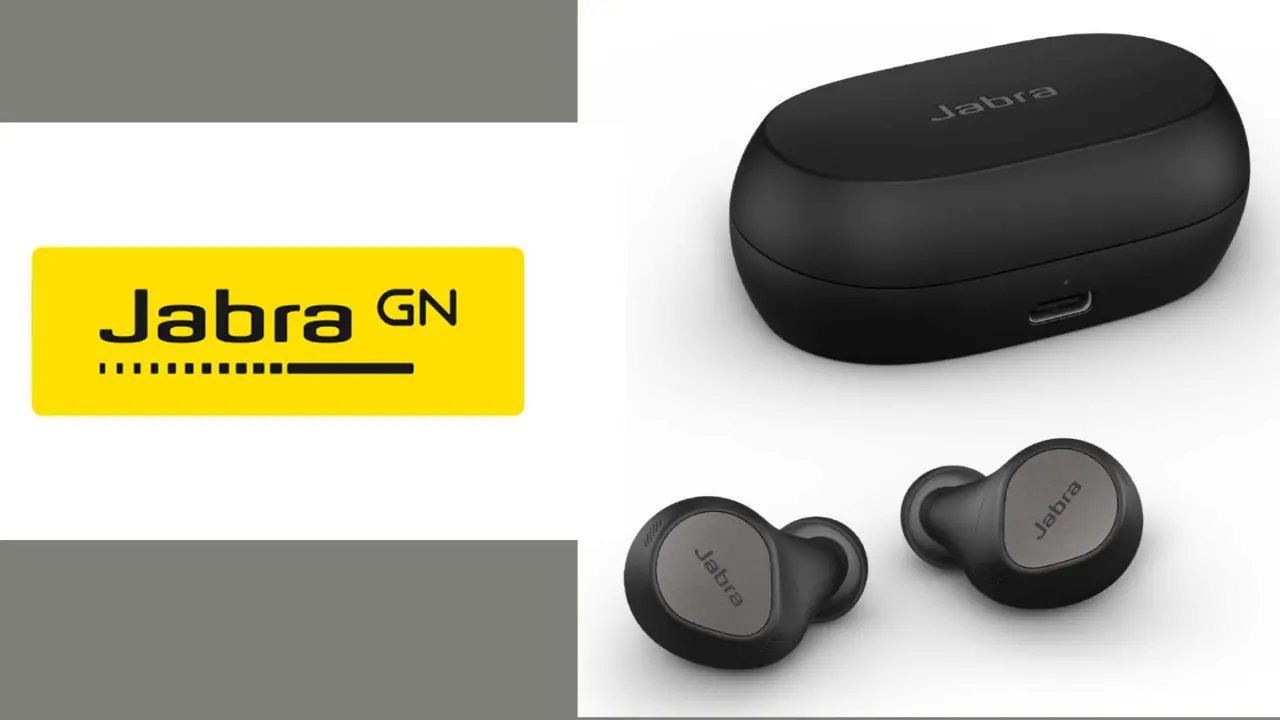
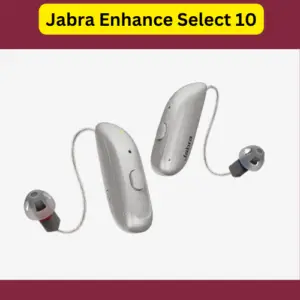
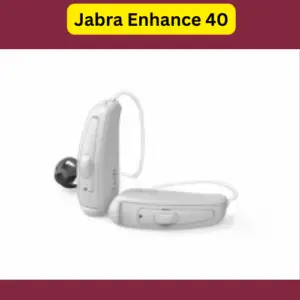
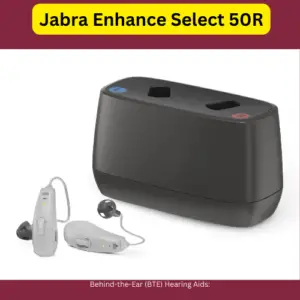
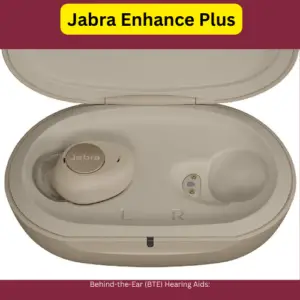

4 thoughts on “Jabra Hearing Aids: A Comprehensive Guide for Beginners”